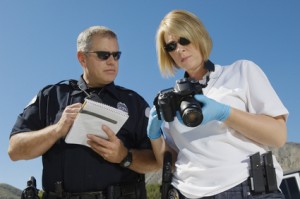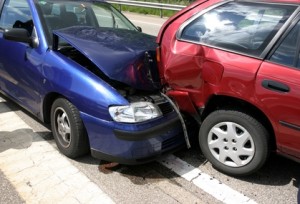Although last year was relatively mild for tornado touchdowns in the US, twisters ravaged the nation seven years ago, causing 17,500 tornado-related auto claims. According to numbers released from the state regulatory office, the number of claims continued to go up even one year after the tragic event. Post-storm claims typically go on for months, instead of the usual days or weeks. And the impact on people's lives stays for years, if not a lifetime.
Currently, auto claims outnumber both homeowner and commercial property claims by a huge margin. Homeowner claims totaled 13,938 and commercial property claims were at 724. Auto claims make up 53 percent of the total tornado related claims according to the Oklahoma Insurance Department (OID). And there are many additional claims that will probably never be reported, including damage to boats and other recreational vehicles. As policy deductibles rise, fewer claims are reported. $1,000 homeowner's insurance deductibles are now very popular options.
Losses from auto related claims totaled almost $30.5 million or almost 12 percent of the total insured losses of $250 million. Homeowner claims make up roughly $211 million of that figure.
Tornadoes ripped across Oklahoma that year spawning EF-5 rated tornadoes which is the highest rating that meteorologist assign tornadoes. Most states never experience any event close to an EF-5 tornado, including the Midwestern states. However, tornadoes classified less than EF-5 can still cause immense damage.
Filing a Post-Storm Claim
Regarding storm damage, motorists must file a claim under the comprehensive portion of their policy. If you are not carrying comprehensive benefits, you will be paying all expenses yourself related to repairing or replacing your vehicle. However, if the vehicle is financed or less than 12 years old, you probably have that coverage, although a deductible may apply. The most common deductibles are $0 (full coverage), $50, $100, and $500. Many older vehicles have comprehensive coverage without collision coverage. You may also have some type of "gap" benefits which will help pay for some of the depreciation of the vehicle. Leased vehicles often offer an inexpensive gap rider. Low or no down-payment leases should take advantage of this option.
Comprehensive coverage will only pay out the current value of the totaled vehicle. The insurer will consider the value in the local market, and come up with an actual cash value (ACV). It is possible for consumers to investigate the actual cash value at sites such as National Automobile Dealers Association and Kelley Blue Book. You can also purchase riders that allow you to replace an older vehicle with a new one (similar make an model), when a covered loss occurs. Liberty Mutual is one of several companies that offers this option, although the rider has become very popular.
By spending an extra hour researching a few reputable resources, you can easily save $500-$2,000. We also publish a list of the cheapest vehicles to insure. If you're trying to find dependable transportation, but not spend your life savings, this list may help you. We also update the list every year, so that new makes and models are researched and included. Hybrid and electric vehicle prices still need to reduce in consumption is going to substantially increase.
The difference between the actual cash value of the vehicle and the cost to replace the car can be significant. In the case of "almost new" vehicles, it is possible to owe more on the vehicle than the insurance payout so you could end up writing a check to the finance company or bank to cover the difference. This situation usually occurs if you are financing the vehicle for more than 48 months and made little or no down-payment. Short-term loans of 36 months (or less) are typically not impacted.
Naturally, you should file a claim with your insurer as soon as possible after any storm or major claim. Although slight delays are inevitable, don't wait months, or even weeks, if possible. Each policy contains a limitation on the number of days you have to file the claim. Once you exceed that amount, you will be responsible for all damages. When an adjuster can view the damage early in the process, your funds will be received quicker. And often funds, such as additional living expenses, are needed quickly. Utilities are typically included.
Tips for Filing an Auto Claim
· Know Your Coverage – Be aware of what your policy does and does not cover. Also be aware of your deductibles. Does your policy cover rental car costs? For example, if a rental car is not covered, that will certainly impact the vehicle that you choose. If you have the rider, there may be a limit to how much reimbursement you receive. Don't rent a vehicle that cost $100 per day if your maximum limit is only $40. High-performance and luxury rentals will be the most expensive option.
· Contact Your Insurer Immediately – You should notify your insurer as soon as possible after a catastrophic event such as a tornado. They can help walk you through the process and advise you on how to proceed. You'll also receive badly-needed funds faster, especially if you have to temporarily stay at a different residence. Local and federal assistance is also likely available and should be utilized.
NOTE: Often, additional living expenses (away from home) are covered under your homeowner's insurance. The amount can vary, but typically it's about 15%-35% of the coverage you have on your dwelling (Coverage "A"). Housing, food, transportation, laundry, and many other expenses can be considered when you file this claim. Another term for this coverage is "loss of use." Condo and renter's insurance policies also contain this benefit although the limits are lower.
· Provide Complete Information – Gather as much information as you can. Take photos of the car and the damage to submit with your claim. Be prepared to email pictures to save time. Save all correspondence for about 12 months including videos and pictures on your cell phone or Smartphone. If there were any witnesses, keep contact information and notify them that you may need a statement in the future.
· Keep Detailed Notes –This is extremely important when dealing with a total loss claim as there may end up being a dispute over the value of the car. Make notes about every contact with the insurance company, jot down the names and the titles of people you talk to as well as a synopsis of the conversation. And if you have a friend or business associate that has gone through this type of event before, it's a great idea to receive some of their input.
NOTE: If litigation is looming, you may be advised to cease contact with specific parties. It's very important to heed that advice and allow your attorneys (or company attorneys) to handle the litigation. Any interference (intentional or unintentional) could damage your case. If you are required to provide live testimony, your legal team will advise you the questions you are likely to be asked. Transportation expenses are not likely to be covered, although certain testimony can be completed online.
· Ask Questions – If you don’t understand something in your policy or disagree with what you are being told, ask questions. If a claim is denied, ask for a written response that points out the exact wording in the policy on which they are basing the denial. You can also get your broker/agent involved since they are likely to provide valuable insight.
· Don’t Rush the Settlement – It is possible and often advisable to negotiate the settlement if you are unhappy with the amount being offered. If necessary, seek legal advice if you feel the offered amount is way off. Remember that you don't have to accept the initial offer. Also, although a legal firm may cost 20%-40% of the propses settlement, if your case is strong, you'll probably receive a higher amount.
· Do Not Buy a New Car Until Settled – You may end up with less money than you expected, so it is best to delay a new car purchase until you know the exact amount of funds you have to spend. You may also be able to negotiate a better deal by waiting. If leasing a vehicle, often, late-year deals can reduce your monthly payment by as much as $20-$40 per month.
As the people of Oklahoma and many Midwesterners know, tornadoes and other severe weather can be devastating. Knowing how to handle a post storm claim will enable you get the best possible settlement. It may be a bit more time-consuming than you expect, but working patiently with your insurers and agent will ultimately lead to the settlement you deserve. Our checklist should help you with the claims process.
Additional Information:
The National Climatic Data Center Information, which is part of the National Oceanic And Atmospheric Administration (NOAA) receives data from the National weather Service and constantly updates their database. The data is extremely accurate and is available to consumers. Thunderstorm wind, tornadoes, flood and hail are several types of episodes that are monitored.
Lightening strikes are not currently documented unless a fatality, injury, or damage to property or crops occurs. Lightening detection networks, however, can provide more comprehensive data. Tornadoes, however, may be counted multiple times, if they cross state boundaries, or lift off the ground for less than 5 minutes or 2.5 miles. Each state keeps more extensive data on touchdowns and damage.


